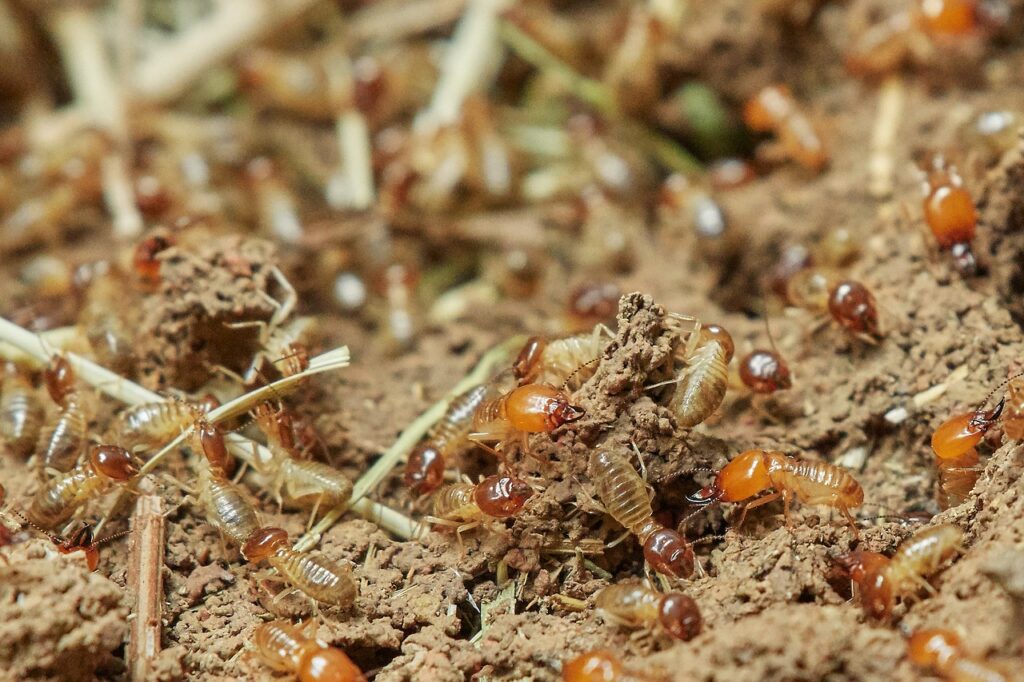Signs You May Have A Termite Infestation

The eastern subterranean termite is the most common termite species in Atlanta, Georgia, followed by the dry wood termite. Subterranean termites are small insects, usually about a quarter of an inch long, that look white or translucent in color.
As a homeowner or landlord, it’s important to familiarize yourself with the early warning signs of a termite infestation. According to the National Pest Management Association (NPMA), termites cost Americans more than $5 billion in damage annually. Recognizing a termite problem before the damage gets too extensive can save you thousands of dollars in repairs and extermination costs.
This article will discuss the most common early signs of a termite infestation and provide options for termite treatment.
Mud Tubes
Mud tubes are some of the most common signs of a termite infestation. Mud tubes are made from soil, wood particles, termite spit, and droppings. Termites will build mud tubes to help protect themselves from predators and keep them cool in warm, dry climates. You may find mud tubes around exterior concrete walls or the foundation of your building.
Wood and Structural Damage
Termites are notorious for chewing on wood. They eat wood from the inside out and create long, hollow grooves within the wood as they chew. These hollow grooves will compromise the structural integrity of the wood and can even cause structures to collapse over time. Try knocking on wood around your building. If it sounds hollow, there may be termites inside.
Swarming Termites & Discarded Wings
Swarming termites, also known as flying termites, are the reproductive termites responsible for starting new colonies. As swarmers mate, their wings will twist and fall off their bodies. Look for piles of discarded swarming termite wings around the foundation of your building. They are usually 1/4 to 1/2 inches long and pale in color.
Termite Droppings and Frass
Subterranean termites will use their droppings to help create their mud tubes. Drywood termites do not use their droppings to form mud tubes. “Frass” is the technical term for dry wood termite droppings. Frass is wood-colored, pellet-shaped, and often confused for wood shavings. Look for frass around your home’s foundation and near areas with wood, like your patio or deck.
Head Banging and Chewing Noises
Not all of the warning signs for a termite infestation are visual. Keep an ear out for faint clicking sounds coming through your walls. Some termites will bang their heads against the wood to signal that the colony is in danger. Termites are also noisy eaters. If you put your ear close to termite-infested wood, you should be able to hear them chewing.
Termite Treatment With Atlanta Environmental Pest Services
Atlanta Environmental Pest Services has treatment options for all your termite control needs. Looking for termite prevention? We can install the Sentricon® System with Always Active Technology around your home for 24/7 protection against termites. Our technicians can also help exterminate an existing termite infestation fast! Contact our office to get more information or to schedule your appointment.
